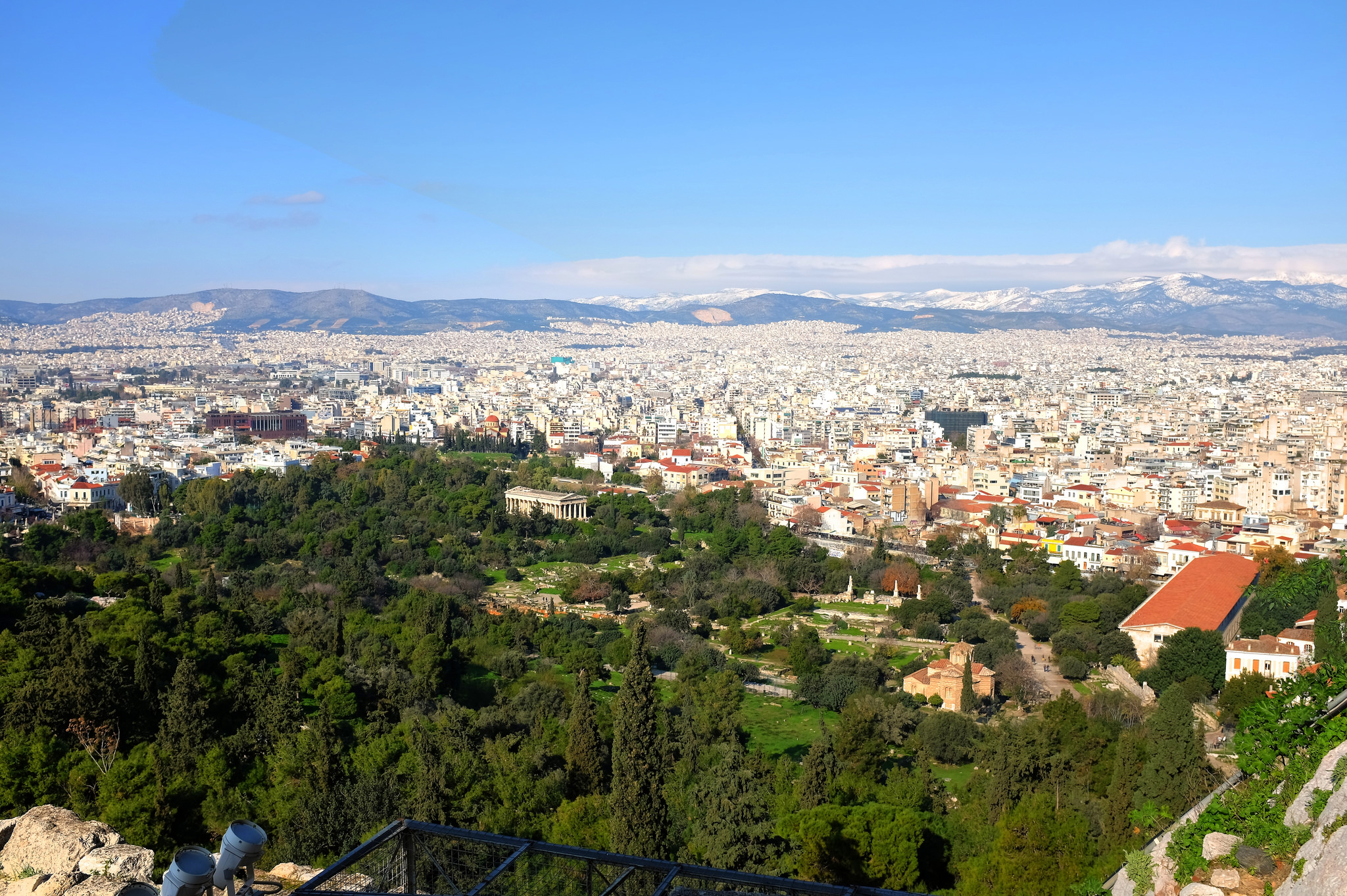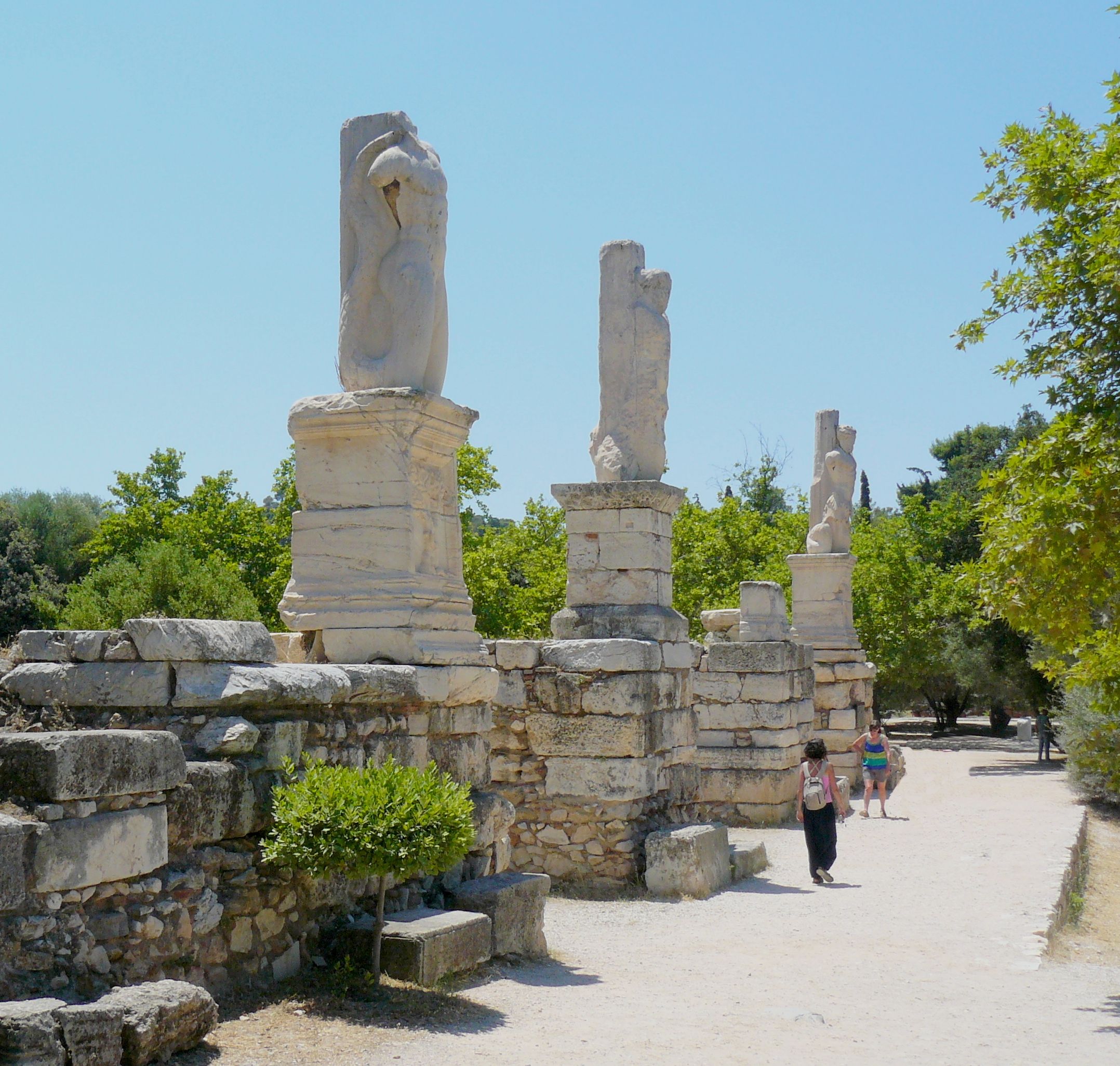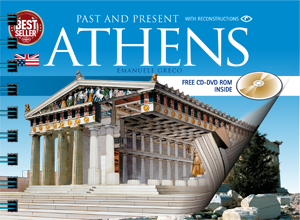To the north of the Acropolis stands the great Agora (square): it was a meeting place for citizens, a large, open space full of buildings and people.
The entrance to the square was located off the street leading from the Dipylon Necropolis.
The agora originally occupied a larger area than the current archeological site. The metropolitan line to Piraeus and the Odhos Adrianou cut through the public area, which extended beneath what is now a built-up area, to the north of the modern road.
On the north side of the agora stood the stoa Poikile (painted), so called after the paintings by Polygnotos which it contained, depicting scenes of mythic battles (between Athenians and Amazons, and between Greeks and Trojans), and also historical ones, such as the Battle of Marathon, and the stoa of the Herms, which is so called because the surrounding area was occupied by a large number of herms (ithyphallic half-figures of Hermes, ie represented with a large erect phallus).

Photo credits by Min Zhou under CC-BY-2.0
On the West side of the agora there were several public buildings: the stoa of Zeus Eleutherios, protector of freedom; the Temple of Apollo Patroos, the place where the births of Athenian citizens were registered; the Metroon, the sanctuary of the Mother of the Gods; the Bouleuterion, a rectangular area with a central cavea which seated those participating in the Assembly of the Five Hundred, the bouleutai (councillors elected to represent the tribes).
Before the Metroon, on a long marble pedestal, there were the bronze statues of the ten “eponymous” heroes, those who gave their names to the ten tribes of Attica. On the façade of this pedestal there were wooden boards where all the official laws and notices were displayed.
Further to the south the square was closed by another big stoa, known as the South stoa, built partly in the late Classical period and partly in the Hellenistic age.
To the mid-second century BC, the agora was closed on its east side by the stoa of Attalos, a portico about 116 metres long, containing shops built on two storeys, with a double portico; in the middle of the facade is the marble base upon which stood a bronze statue depicting the quadriga (four-horse chariot) of Attalos II King of Pergamon, who had the monument built at his own expense.
The stoa of Attalos has been rebuilt by the archaeologists of the American School, and it currently houses the Agora Museum.
During the Roman period, the central area of the square is occupied by the big Odeion of Agrippa, a building for concerts, erected at the end of the Ist century BC. by Agrippa, Augustus son-in-law.

Photo credits by Janmad under GFDL.
A big square hall contained a cavea for an audience of about a thousand, the orchestra and the stage building. The entrance consisted of a propylon through which were two long entrance halls; the building was surrounded by a large colonnade.
On the West side of the agora is the hill known as the Kolonos Agoraios, upon which stands the temple known as the Hephaisteion (Temple of Hephaistos); it is also referred to as the Theseion, a Doric peripteral with six columns across its short sides and thirteen down its long ones.
The temple, built in the mid Vth century BC, is perfectly preserved, still bearing the sculpted decorations of its Doric frieze: the metopes on the east facade depict the Labours of Herakles, and those on the long sides the Labours of Theseus.
An Ionic frieze proceeding along the inside walls of the pronaos and opisthodomos also survives. This represents Centaurs and Lapiths and scenes from the myth of Theseus.

Do you want to know more about the Agora, the Acropolis and the history of Athens?
Check out our guidebook to Athens, with detailed history and Past & Present images of the Acropolis, the Parthenon, the Propylaea and all the greatest historical and archaeological sites of the greek city.

